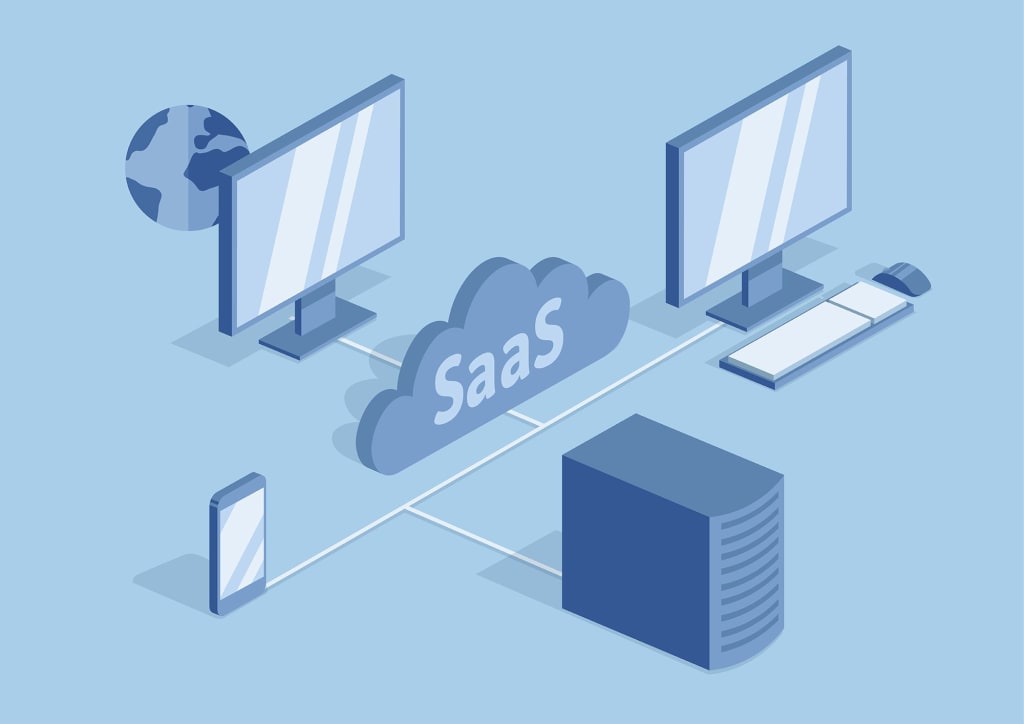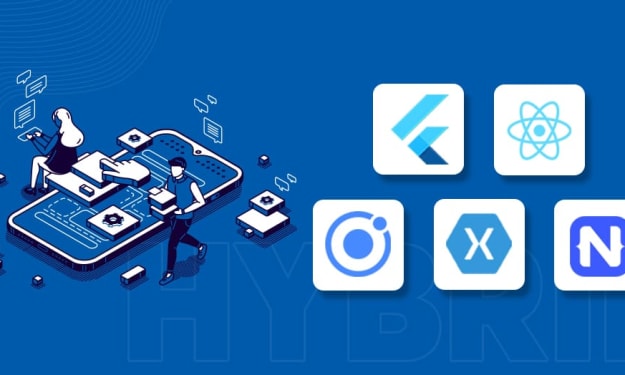Seamlessly Connect Your Systems
Expert SAAS Integration

Software as a Service (SAAS) integration has become an essential aspect of modern business operations, facilitating seamless communication between various applications and systems. The efficient integration of SAAS solutions ensures that data flows smoothly across platforms, leading to enhanced productivity, streamlined processes, and informed decision-making.
Understanding SAAS Integration
SAAS integration involves connecting various cloud-based applications to work together as a cohesive system. This process ensures that data is synchronized and accessible across different software solutions, eliminating data silos and improving overall operational efficiency.
The Importance of SAAS Integration Services
SAAS integration services play a crucial role in today's digital landscape. They enable businesses to:
Streamline Operations: By integrating disparate systems, businesses can automate workflows and reduce manual intervention.
Enhance Data Accuracy: Integrated systems ensure that data is consistent and up-to-date across all platforms.
Improve Decision-Making: Access to unified data allows for better analysis and strategic planning.
Key Components of Effective SAAS Integration
For successful SAAS integration, certain components must be in place:
API Integration
Application Programming Interfaces (APIs) are the backbone of SAAS integration. They allow different software applications to communicate with each other, facilitating data exchange and functionality sharing.
Data Mapping and Transformation
Data mapping involves defining how data fields from one system correspond to those in another. Data transformation ensures that data is converted into the appropriate format for the receiving system.
Middleware Solutions
Middleware acts as a bridge between different applications, enabling them to communicate and share data. It simplifies the integration process and enhances data flow efficiency.
Types of SAAS Integration
There are several types of SAAS integration, each serving different business needs:
Point-to-Point Integration
This type of integration connects two applications directly. While simple and cost-effective for small-scale integrations, it can become complex and difficult to manage as the number of integrated applications increases.
Hub-and-Spoke Integration
A central hub facilitates data exchange between various applications in this model. It is more scalable than point-to-point integration and easier to manage as the number of applications grows.
Enterprise Service Bus (ESB)
An ESB provides a more robust and flexible integration solution, allowing multiple applications to communicate through a central bus. It supports complex integration scenarios and provides better scalability and manageability.
Cloud-Based Integration Platforms
These platforms offer a comprehensive solution for integrating multiple cloud-based applications. They provide pre-built connectors, tools for data mapping and transformation, and support for various integration patterns.
Best Practices for Successful SAAS Integration
Implementing SAAS integration requires careful planning and execution. Here are some best practices to ensure success:
Thorough Planning
Start with a clear understanding of your business requirements and goals. Identify the systems that need to be integrated and define the data flows and processes involved.
API Integration
Leverage APIs for seamless communication between applications. Ensure that the APIs used are well-documented and supported by the respective software providers.
Data Mapping and Transformation
Define data mappings to ensure that data is accurately transferred between systems. Use data transformation tools to convert data into the required format.
Testing and Validation
Thoroughly test the integration to identify and resolve any issues. Validate data flows and ensure that the integrated systems work as expected.
Monitoring and Maintenance
Continuous monitoring is essential to ensure that the integration remains functional and efficient. Regular maintenance and updates are necessary to address any changes in the integrated applications.
Key Benefits of SAAS Integration
SAAS integration offers numerous benefits to businesses, including:
Enhanced Efficiency
Integrated systems automate workflows and reduce manual data entry, leading to improved operational efficiency.
Scalability
SAAS integration allows businesses to easily add new applications and scale their operations without significant disruption.
Improved Data Centralization
By integrating various applications, businesses can centralize their data, ensuring that it is accessible and consistent across all platforms.
Better Decision-Making
Unified data from integrated systems provides a comprehensive view of business operations, enabling better analysis and strategic planning.
Cost Savings
Automated workflows and reduced manual intervention lead to cost savings in terms of time and resources.
Challenges in SAAS Integration
While SAAS integration offers numerous benefits, it also comes with certain challenges:
Data Security
Ensuring the security of data as it flows between different systems is a major concern. Businesses must implement robust security measures to protect sensitive information.
Compatibility Issues
Different applications may have varying data formats and integration capabilities. Ensuring compatibility and seamless communication between these applications can be challenging.
Complexity of Integration
As the number of integrated applications increases, the integration process can become complex and difficult to manage. Proper planning and the use of middleware solutions can help mitigate this challenge.
Maintenance and Updates
Regular maintenance and updates are required to ensure that the integration remains functional. Changes in any of the integrated applications may require adjustments to the integration setup.
SAAS Integration Services
SAAS integration services provide expertise and tools to facilitate the integration of various cloud-based applications. These services offer:
Consultation and Planning
Experts help businesses identify their integration needs and develop a comprehensive integration strategy.
API Development and Integration
SAAS integration services include the development and implementation of APIs to enable communication between different applications.
Data Mapping and Transformation
These services ensure accurate data mapping and transformation to facilitate seamless data exchange between systems.
Middleware Solutions
Middleware solutions provided by SAAS integration services simplify the integration process and enhance data flow efficiency.
Testing and Validation
Thorough testing and validation are conducted to ensure that the integration works as expected and meets business requirements.
Ongoing Support and Maintenance
SAAS integration services offer ongoing support and maintenance to address any issues and ensure that the integration remains functional.
Enterprise Application Integration Services
Enterprise Application Integration services focus on integrating various enterprise-level applications to streamline business processes and enhance operational efficiency.
Key Features of EAI Services
EAI services offer several features, including:
Comprehensive Integration Solutions
EAI services provide end-to-end integration solutions, covering everything from planning and development to testing and maintenance.
Custom Integration Development
Custom integration solutions are developed to meet the specific needs and requirements of the business.
Robust Middleware Solutions
Middleware solutions provided by EAI services facilitate seamless communication between different enterprise applications.
Data Mapping and Transformation
EAI services ensure accurate data mapping and transformation to enable efficient data exchange between systems.
Continuous Monitoring and Support
Ongoing monitoring and support are provided to ensure that the integration remains functional and efficient.
Best Practices for Enterprise Application Integration
To ensure the success of enterprise application integration, businesses should follow these best practices:
Comprehensive Planning
Start with a thorough understanding of business requirements and goals. Identify the applications that need to be integrated and define the data flows and processes involved.
Leverage Middleware Solutions
Use middleware solutions to simplify the integration process and enhance data flow efficiency.
Ensure Data Accuracy
Accurate data mapping and transformation are essential to ensure that data is accurately transferred between systems.
Thorough Testing and Validation
Conduct thorough testing and validation to identify and resolve any issues. Ensure that the integrated systems work as expected.
Continuous Monitoring and Maintenance
Regular monitoring and maintenance are essential to ensure that the integration remains functional and efficient. Address any changes in the integrated applications promptly.
Conclusion
SAAS integration is a critical component of modern business operations, enabling seamless communication and data exchange between various cloud-based applications. By leveraging SAAS integration services and enterprise application integration services, businesses can enhance operational efficiency, improve decision-making, and achieve cost savings.
Impressico Business Solution can help businesses navigate the complexities of SAAS integration with our expert services. Our comprehensive solutions include consultation, API development, data mapping, middleware solutions, and ongoing support to ensure successful integration. Partner with us to streamline your operations and achieve your business goals through effective SAAS integration.
FAQs
What is SAAS integration?
SAAS integration involves connecting various cloud-based applications to work together as a cohesive system, ensuring that data flows smoothly across platforms.
Why is SAAS integration important?
SAAS integration is important because it streamlines operations, enhances data accuracy, improves decision-making, and leads to cost savings.
What are the key components of SAAS integration?
Key components of SAAS integration include API integration, data mapping and transformation, and middleware solutions.
What are the types of SAAS integration?
Types of SAAS integration include point-to-point integration, hub-and-spoke integration, enterprise service bus (ESB), and cloud-based integration platforms.
What are the challenges in SAAS integration?
Challenges in SAAS integration include data security, compatibility issues, complexity of integration, and maintenance and updates.
How can Impressico Business Solution help with SAAS integration?
Impressico Business Solution offers comprehensive SAAS integration services, including consultation, API development, data mapping, middleware solutions, and ongoing support to ensure successful integration.
About the Creator
Catherine William
Hey, I'm Catherine William Experienced Web Developer. I have 5+ years of industry experience. Now I'm working with Impressico Business Solution. They are offering mobile app testing services, Business Process Services, and many more.
Enjoyed the story? Support the Creator.
Subscribe for free to receive all their stories in your feed. You could also pledge your support or give them a one-off tip, letting them know you appreciate their work.






Comments
There are no comments for this story
Be the first to respond and start the conversation.